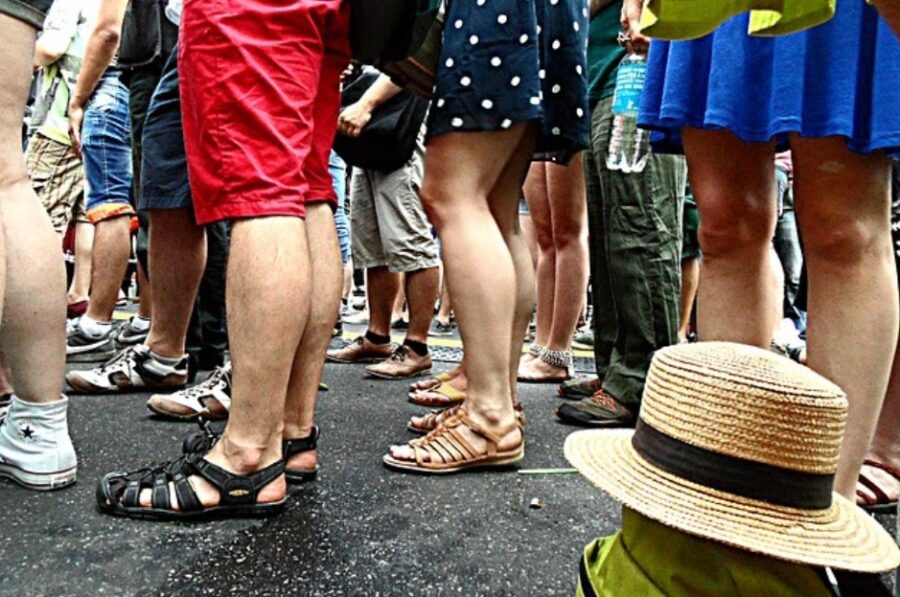
4 Things That Can Help If You Have Varicose Veins
Veins are the channels that carry blood from your tissues to your heart. They lie just under the skin and can be seen as blue or purple lines when you look at them. When they become twisted, swollen, or enlarged due to pressure on them, it’s called varicose veins. Varicose veins usually form in people who have had a lot of standing or sitting time during their day. This can happen because of prolonged periods of standing still, such as while you work at a desk job, but also if you stand for long periods outside like construction workers often do. Varicose vein symptoms may include discomfort, pain, itching, and burning sensation in addition to more serious conditions such as leg ulcers or lower-extremity deep vein thrombosis (DVT). Luckily, there are ways to help manage varicose veins and prevent them from getting worse. Here’s a look at four of those things!
1. Exercise and Lose Weight
Exercise can help a lot with varicose veins, as it is a common misconception that exercise will only worsen them. The truth is, they might worsen if you have been standing or sitting for long periods every day, but by exercising you will be able to improve your circulation and therefore prevent varicose veins from getting worse. If you’re overweight or obese, your risk of developing varicose veins increases. So, to help prevent or improve varicose veins, take your weight off! Try to get 30 minutes of exercise each day and make sure you’re not overeating, losing just 10% of your current weight can help alleviate the symptoms.
2. Wear Supportive Footwear/Clothes
One of the best ways to help with varicose veins is to wear supportive footwear. You want to find shoes that are designed for people who have foot problems, so they are either very flat or have a high arch. They also have an inner sole with a soft foam layer. This helps encourage good circulation in the feet, which can help reduce the pain and discomfort brought on by varicose veins.
Wearing supportive footwear like compression socks, stockings, or even shoes with good arch support helps keep your pressure levels down and decreases the swelling that can be caused by standing or sitting for long periods of time.
Sometimes it can be difficult to get enough blood flow up to your legs, especially if you are wearing tight clothing or pants that are too snug. To help with this, the folks at TheraWear suggest wearing loose-fitting clothing and avoiding pants that have a lot of elasticity in them. This will help reduce the amount of pressure that can be put on your veins and help you avoid varicose veins in the future.
3. Elevate Your Legs
One of the most common treatments for varicose veins is elevating your legs. By keeping your legs elevated, you can reduce the pressure in your veins, which may help to relieve some of the discomfort or pain that comes with varicose veins. You can also try sitting on a pillow when you are sitting up in order to keep the weight off of your legs and elevate them.
While you sit or sleep, elevate your feet by putting them up on a stool, the arm of the couch, or even a stack of books. This helps move blood back toward your heart and decreases pressure in your veins. If you notice any leg swelling appearing during this time, make sure you prop them up higher, so they are above your waistline.
4. Avoid Standing Still
Varicose veins are often the result of standing for long periods of time, such as at a desk job or while you work outside as a laborer. Standing still causes the weight of your body to put unnecessary pressure on your feet, and this can lead to varicose veins.
One way that you can help if you have varicose veins is to avoid standing still. Varicose veins are caused by blood flow moving too slowly through the veins, so it’s important to move around and keep your blood flowing. This is because the buildup of fluids in your leg veins will happen if too much of your blood settles in one place.
If you work at a desk job, get up and walk around every 30 minutes or so to give your legs some relief and circulation a boost. If you’re taking a break from the office, be sure to take it outside, walking through fresh air is good for your circulation!

In this article, you have learned about 4 things that can help if you have varicose veins. Whether your symptoms are mild or severe, many of these tips may be able to provide some relief from the discomfort and pain. Exercise is one way to alleviate the pressure in your legs by increasing blood flow through your veins while wearing supportive footwear and loose-fitting clothing will also help reduce swelling caused by standing too long without a break. The best way to avoid developing varicose veins altogether is to take breaks periodically throughout the day or when possible, keep an eye out for signs like leg swelling so that they don’t worsen into something more serious later on!











